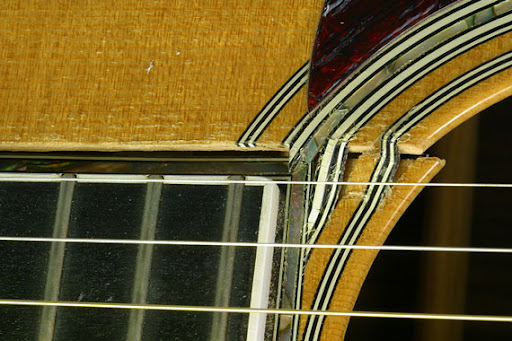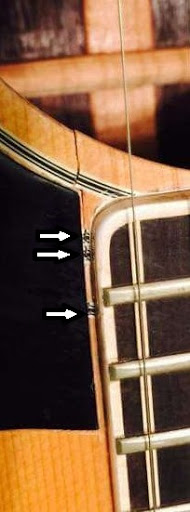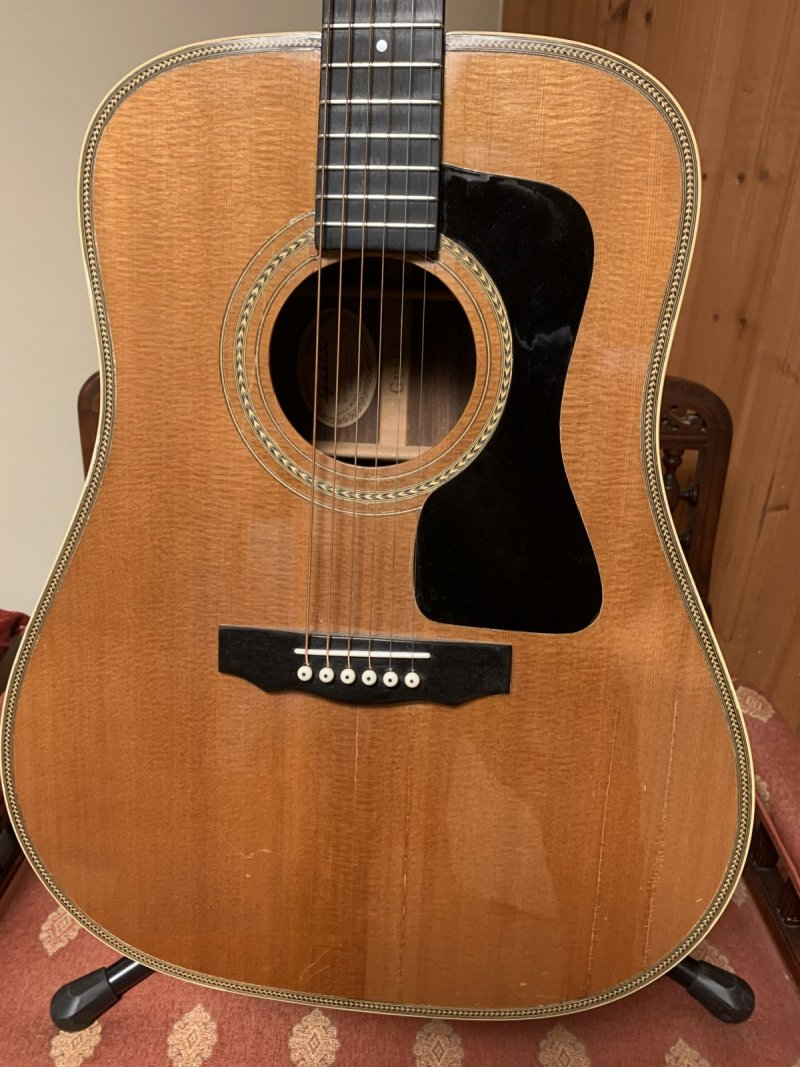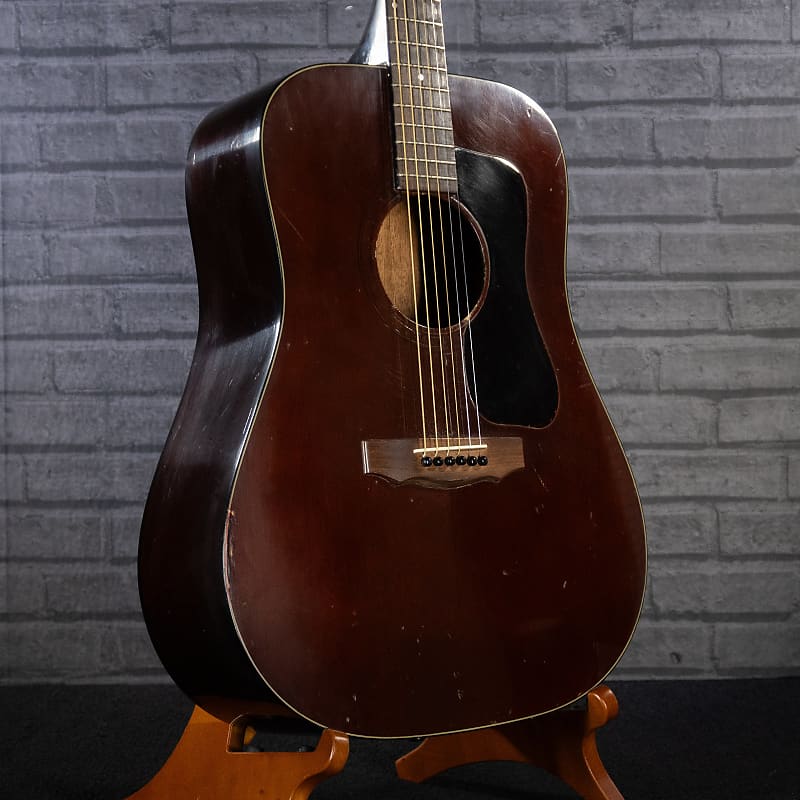A neck block is glued to the sides of the guitar where the two sides meet on the neck side. The top and bottom of the guitar are also glued to the sides. That makes for a fairly rigid box. However, strings exert a lot of force on the neck. You can calculate here the amount of tension:
The Stringjoy Guitar String Tension Calculator is the easiest and best tool to build the perfect balanced tension set of strings for your guitar or bass.

tension.stringjoy.com
Tension Calculator
The amount tension rises when you go from 10s to 11s to 12s from about 140 lbs to 160 lbs to 180 lbs. This causes the sides of the guitar to deform over time as the neck gets pulled up. Also, it can cause the top (around the bridge) to pull up. On my 1970, the neck block is not as wide as on my '73 and '74 and so less of the sides are helping resist this force. It has been reset, at least once. The beefing up of Guilds starting in 1973 helps to resist this movement. I think for most guitars, the wood finally gets to the point where this "collapse" slows or stops. Eventually, the rigidity of the box holds. If it doesn't, it generally means something in the wood is totally failing. Signs of this would be the neck actually causing the sides to collapse in towards the sound hole. Here is an extreme version of this. So any cracking of the top on either side of the fretboard, especially if there is any movement of the fretboard towards the sound hole gives me pause.
Pretty extreme.

Here is one with the movement just starting.

I have also seen where the sides of the guitar where they meet the neck start to deform inwards.
You an see that here. This can be fixed, but it's prob not a cheap repair.




